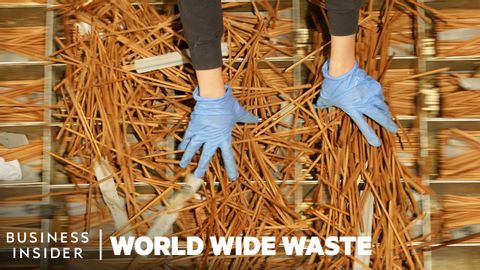如何將用過的筷子變成桌子瓷磚和其他家具(How Used Chopsticks Are Turned Into Tables, Tiles, And Other Furniture | World Wide Waste)
joey joey 發佈於 2022 年 03 月 23 日  沒有此條件下的單字
沒有此條件下的單字- adj.巨大的;大而重的;大量的;厚重的;大規模的
US /ˈprɑsˌɛs, ˈproˌsɛs/
・
UK /prə'ses/
- v.t.用電腦處理(資料);(依照規定程序)處理;處理;流程;加工;理解
- n. (c./u.)(規定的)程序;過程;進程;方法;法律程序;進程
US /məˈtɪriəl/
・
UK /məˈtɪəriəl/
- n. (c./u.)布料;素材;資料;材料;物質
- adj.重要的;物質的
US /ɪˈlɪməˌnet/
・
UK /ɪ'lɪmɪneɪt/
